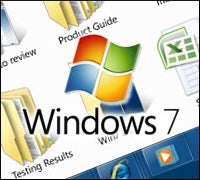 |
Microsoft is just weeks away from shipping the release candidate of Windows 7. In the meantime, the company’s developers are rushing to pack in a few more last-minute changes to the system, with the latest tweaks primarily affecting the system’s user interface.
But the question remains whether all of the last-minute changes will derail Microsoft’s very tightly scheduled plans for getting Windows 7 out the door on time.
A release candidate, or RC, is the last phase of testing for a Microsoft (NASDAQ: MSFT) product before it ships to the Web and to manufacturers.
Microsoft ended the beta test of Windows 7 on Feb. 10 — the last day that the beta code could be downloaded. Now, it’s preparing for the RC stage, which InternetNews.com has reported is scheduled to begin April 11.
As that date looms, however, Microsoft has been making dozens of mostly minor changes to the post-beta, pre-RC code. These latest changes have primarily been in the “minor” category, primarily in the user interface.
“Hey folks, just wanted to provide another update (building on the recent post on some changes since Beta) on some of the changes you will see in the Release Candidate,” Steven Sinofsky, senior vice president of Windows and Windows Live Engineering, said in a blog posting Friday.
This time, Microsoft is adding other UI features requested by users, such as the ability to toggle between thumbnails and lists for closing and switching among open windows. The control panel will also now list the most recently used utilities. Another change will add the ability to use multitouch zoom inside Internet Explorer 8 (IE8).
One change that’s not so minor: In early March, Microsoft also added the ability to turn off IE8 in the RC, a move that may help assuage anger toward Microsoft from the European Commission (EC), which has accused the company of illegally tying IE to Windows going back to the 1990s.
The change will enable users to more easily make their own selection of which browser they want to run. The EC has said it may demand that Microsoft bundle other major browsers on Windows, a statement which Microsoft takes seriously enough to warn shareholders it may be required to make that concession.
Other features of Window 7 that can be turned off include Windows Media Player, Media Center, Windows DVD Maker, Windows Search and Handwriting Recognition. Also on the list are the Windows Gadget Platform, Fax and Scan
XPS Viewer and Services, the company said on its Engineering Windows 7 blog.
Microsoft’s cone of silence over Windows 7 has been leaky since last fall when recipients of the pre-beta code given out at the company’s Professional Developers Conference posted it on BitTorrent sites almost immediately — a pattern that has successively repeated itself as each new release leaks.
Microsoft has been extremely efficient with maintaining consistent progress on Windows 7. Indeed, if it keeps up the current pace, some analysts expect Microsoft might even have Windows 7 on store shelves before Thanksgiving.
InternetNews.com reported in September that Microsoft had told business partners it is shooting for the end of RC testing and official “release to manufacturing,” or RTM, on June 3 or thereabouts.
Right now, the project seems to be on track. Too many unfixed bugs in the beta code or demands for new features could slow or even stall Microsoft’s pace, however. That could conceivably delay delivery and put Windows 7’s arrival in time for the holiday sales season in doubt. And as with any software project, the risk that a major “showstopper” bug could emerge even at this late date still remains a possibility.
In the meantime, other pieces of the Windows 7 puzzle are also marching in step. For instance, Microsoft is expected to announce that it has RTMed IE8 this week.


